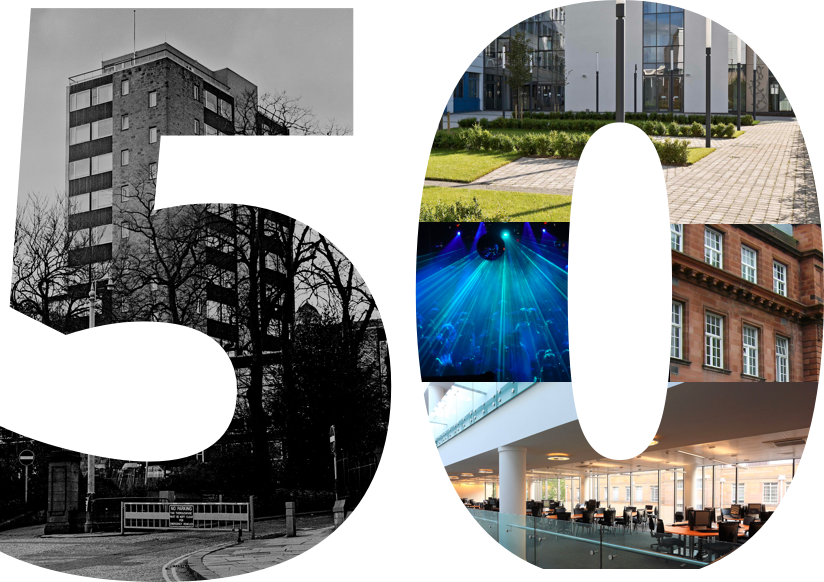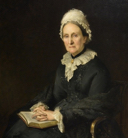
-
Celebrations begin to commemorate 50 years of the University of Dundee
2017 -
The University of Dundee becomes a fully independent institution under the terms of the Royal Charter.
1967 -
Ordinances issued in 1897 made University College form part of St Andrews. and establish a Faculty of Medicine.
1897 -
The Deed formally creating University College Dundee was signed by founders Miss Mary Ann Baxter and her cousin Dr John Boyd Baxter.
1881
Architecture
-
date
Fri, 11 Aug 2017
-
Running Time
00:05:28
As the skyline of Dundee undergoes its most radical transformation in a generation, it’s important to remember that the city already has an impressive architectural heritage.
Episode Transcript
As the skyline of Dundee undergoes its most radical transformation in a generation, it’s important to remember that the city already has an impressive architectural heritage.
The University of Dundee is a natural place to start, its campus being composed of the nineteenth-century buildings that pre-dated its independent university status, and a carefully planned network of new buildings to house the university’s expansion.
The Tower Building on Perth Road, which opened in 1956, can be seen as the bridge between the two and with its 10 storeys has the best city centre view of the surrounding buildings and, of course, the river.
Having a position at the heart of the city, geographically and culturally, the university has a relationship with many other institutions, such as Dundee Rep.
Built on ground donated by the university, the theatre opened its doors in 1982 and is seen as something of a landmark building for city architects Nicoll Russell Studios.
It was one of two city buildings to reach the final 10 of Scotstyle, the public vote on the country’s favourite buildings held during last year’s Festival of Architecture.
It was joined in that list by Dundee Contemporary Arts, which opened in 1999 and was designed by Richard Murphy Architects - a pivotal building in the cultural renaissance of the city.
The stamp of Nicoll Russell Studios can be seen throughout the extended university campus in buildings such as the Old Medical School & Carnelley Building, the Artists Studio at Dundee of Jordanstone College of Art and Design, the Scrymgeour Building extension, and the Institute for Sport and Exercise.
One of the most welcome new buildings for Dundee has also been designed by Nicoll Russell Studios, the new railway station that will face Kengo Kuma’s V&A at Dundee.
This is an exciting time to be in the city, and perhaps even more so for the students arriving from around the world to join the university’s Master of Architecture Programme.
It has always been at the forefront of encouraging individual thinking in the field and has been populated with some of the most respected figures in Scottish architecture.
Among those was Charles McKean, who died in September 2013.
In a career that included being Chair of UNESCO Edinburgh World Heritage Trust, he arrived at Duncan of Jordanstone College of Art and Design as Head of the School of Architecture in 1995 before becoming Professor of Scottish Architectural History in 1997.
He was a man who cared passionately for preserving the city’s architectural history and not only led hundreds of detailed and fascinating walking tours, but also committed his work to print in accessible forms.
One example of his approach that blended xxx research with an ability to engage with the layman was Lost Dundee, co-authored with Dr Patricia Whatley, director of the Centre for Archive and Information Studies.
Through illustrations and photography and intricate research it repainted a picture of the Dundee that had once stood over centuries of industrial and maritime dominance - and that was lost in the name of what was surely referred to at the time as progress.
Also at the University, The Geddes Institute for Urban Research is a multi-disciplinary forum and research facility incorporating Architecture, Planning, and Geography. It takes its name from Patrick Geddes, a man whose talents extended far beyond his reputation as a planner. He worked towards an understanding how we live in our natural, built, and social environments and insisted that the city and its region should be seen as one.
Those who study the at Dundee still benefit from the legacy of luminaries such as Geddes and McKean, but also a team that is as passionate about the future of architecture as its past.
Michael Marra

Michael Marra is Research Strategist at the Leverhulme Research Centre for Forensic Science, University of Dundee. Michael joined LRCFS after four years as Deputy Director of Design in Action – one of the AHRC’s flagship Knowledge Exchange Hubs for the Creative Economy. He specialises in industrial engagement in research and development and has published on industrial policy and the innovative mobilisation of intellectual property. Michael’s background in public policy and political affairs has included posts in the Scottish and UK Parliaments as a senior political adviser and as Head of Policy and Public Affairs for Oxfam. He is a graduate of the London School of Economics and Political Science and previously from the University of Glasgow where he has taught international comparative politics.
-
Celebrations begin to commemorate 50 years of the University of Dundee
2017 -
The University of Dundee becomes a fully independent institution under the terms of the Royal Charter.
 1967
1967 -
Ordinances issued in 1897 made University College form part of St Andrews. and establish a Faculty of Medicine.
1897 -
The Deed formally creating University College Dundee was signed by founders Miss Mary Ann Baxter and her cousin Dr John Boyd Baxter.
 1881
1881